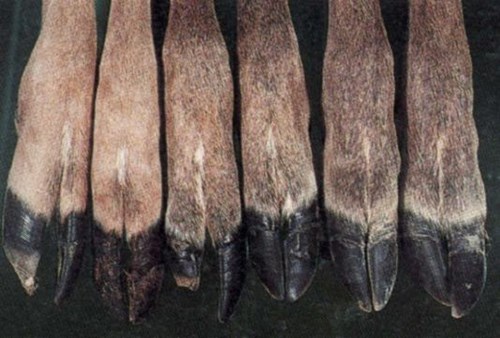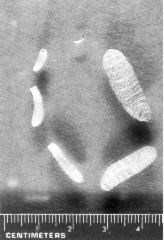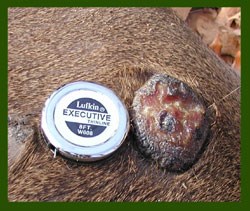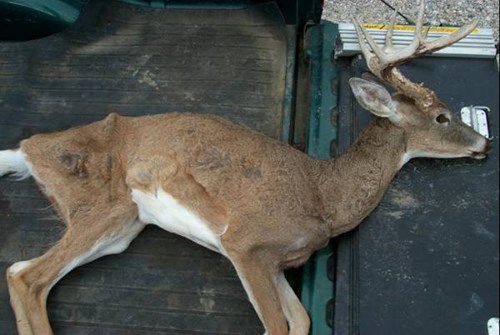Diseases and Abnormalities

Hemorrhagic Disease & the White-tailed Deer
According to the Southeastern Cooperative Wildlife Disease Study (SCWDS), hemorrhagic disease (HD) is "the most important infectious disease of white-tailed deer." The significance of this statement is difficult to grasp, especially when diseases like anthrax and chronic wasting disease are considered. The geographical distribution of HD included most of North America, ranging from the southeastern regions of Florida to Washington.Read more...

Nasal Bots in Deer: Harmless but Irritating
Nasal bots are the larvae or "maggot stage" of a specialized fly. In the scientific world this fly belongs in the genus Cephenemyia. Biologists find them in a high percentage of deer, particularly when a thorough examination of the head is conducted. These bots are specific to cervids (members of the deer family, such as elk and mule deer) in North America.Read more...

Cutaneous Fibromas In Deer: A Closer Look(Warts & All)
Cutaneous fibromas, more commonly called deer warts by hunters, are occasionally observed on harvested deer. The fibromas are pealing, especially when they appear in large numbers. "Grotesque" is a common description of these harmless skin blemishes. The fibromas are found in deer herds from a majority of states in the nation. As a result, they are considered to exist in the entirety of the white-tailed deer range. Read more...

Chronic Wasting Disease
Chronic wasting disease (CWD) is a progressively degenerative fatal disease that attacks the central nervous system of members of the deer family. To date, it has been diagnosed in elk, mule deer, black-tailed deer, white-tailed deer, and moose. CWD is one of a group of diseases known as transmissible spongiform encephalopathies (TSEs). These diseases are characterized as transmissible because they can be transmitted from one infected animal to another. They are further classified as spongiform due to the "spongy-like" areas which form in the brain of the infected animal, hence the encephalopathy portion of the name.









